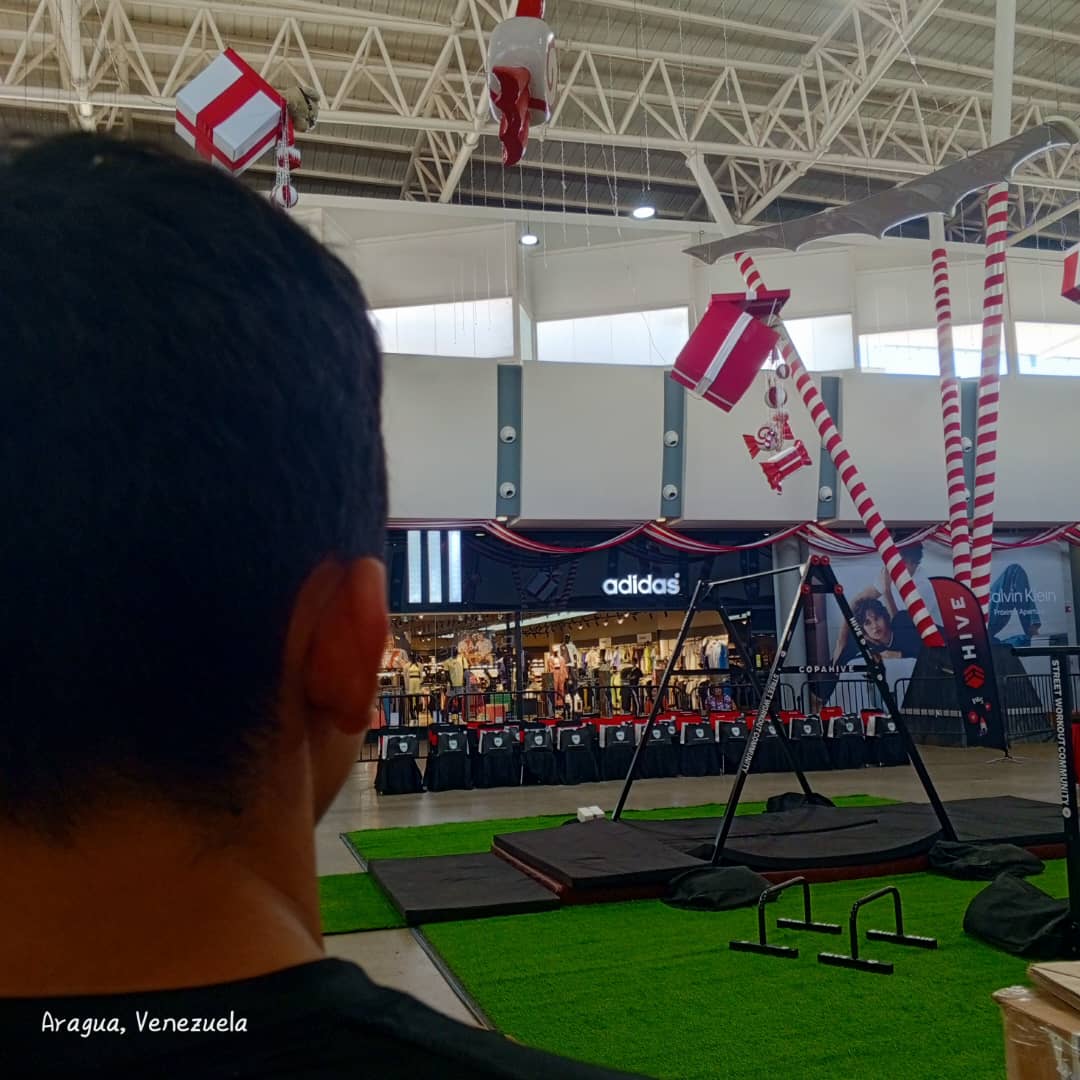Don't reach failure in calisthenics | no llegues al fallo en la calistenia [ENG/ESP]
| Street Workout Community |
|---|
English

Greetings to everyone, hivers, I hope you're all doing well. Training to failure in calisthenics is a practice that many believe is essential for optimizing strength and muscle growth. Initially, I was attracted to the idea of pushing each set to its limit, until I couldn't perform another repetition with proper technique. However, over time and after doing some research, I've come to understand that this isn't always the best strategy. Scientific data and practical experience indicate that training close to failure, which means leaving some repetitions in reserve, can be more effective and sustainable for most individuals.
Research indicates, from an objective perspective, that for achieving strength and hypertrophy, there is no significant disparity between training to failure and staying within a few repetitions of it, as long as the total training volume is comparable. Furthermore, approaching failure can be counterproductive for beginners, as their muscles and nervous system are still adapting, and extreme fatigue can hinder performance. advance.
 |  |
|---|---|
 |  |

I've realized, on a personal level, that consistently reaching failure carries certain risks. In calisthenics, where body control is essential, technique tends to degrade when fatigue accumulates, which can lead to injury. Likewise, the central nervous system tires, which impacts my performance in the following days and hinders recovery. I've learned that it's essential to differentiate between muscular failure and technical failure: the former occurs when you can no longer maintain proper form, and the latter is the true failure you strive for during weight training sessions. In calisthenics, technical failure tends to occur first, which makes pushing to muscular failure more risky.
My perspective has changed since I started using the concept of Reps in Reserve (RIR). I now try to stop when I think I could perform one or two more reps, especially if I'm working on complicated exercises like dips or pull-ups. This not only helps me maintain a refined technique, but also helps me prevent excessive fatigue and recover more efficiently. For more experienced athletes, including muscle failure in a controlled manner (for example, on the last set or in safer exercises) can be an alternative, but it shouldn't be a routine. usual.
 |  |
|---|---|
 |  |

In practice, this means progressing to more difficult sets before completing all the reps at a single level. For example, after mastering regular push-ups, it's preferable to do decline or one-arm push-ups rather than continuing to do push-ups until fatigue is reached. Likewise, by performing more sets at RIR rather than a single set to failure, you can increase the total amount of training and thus promote growth without overloading the body. I also strive to control the negative phase of each rep by slowing down the movement to maximize time under tension. This method has been shown to be an effective way to promote hypertrophy without having to reach failure on every set.
 |  |
|---|

To advance in calisthenics, you don't need to train to failure. Rather, training close to failure with flawless technique and proper planning leads to better long-term results, decreases the risk of injury, and makes it easier to maintain a sustainable routine. This realization has changed the way I train, making me realize that quality and balance are more important than simply pushing your body to the limit with each rep. I'm omarzv-sw, and this was my post. See you later!
Spanish

Un saludo a todos, hivers, espero estén de maravilla. El entrenamiento hasta el fallo en calistenia es una práctica que muchos opinan que es fundamental para optimizar la fuerza y el crecimiento de los músculos. Inicialmente, me sentía atraído por la idea de empujar cada serie a su límite, hasta que no pudiera hacer una repetición más con técnica adecuada. No obstante, con el tiempo y después de informarme, he llegado a entender que esta no es siempre la mejor estrategia. Los datos de la ciencia y la experiencia práctica indican que entrenar cerca del fallo, lo que significa dejar algunas repeticiones en reserva, puede resultar más eficaz y sostenible para la mayor parte de los individuos.
La investigación indica, desde un enfoque objetivo, que para alcanzar fuerza e hipertrofia no hay una disparidad significativa entre entrenar al fallo y quedarse a unas repeticiones de este, siempre y cuando el volumen total del entrenamiento sea comparable. Además, acercarse al fallo puede ser contraproducente para los que están comenzando, ya que sus músculos y sistema nervioso todavía están en fase de adaptación y el cansancio extremo puede obstaculizar el avance.
 |  |
|---|---|
 |  |

Me he percatado, a nivel personal, de que alcanzar el fallo de manera constante conlleva ciertos riesgos. En la calistenia, donde es esencial controlar el cuerpo, la técnica tiende a degradarse cuando se acumula la fatiga, lo que puede llevar a lesiones. Asimismo, el sistema nervioso central se cansa, lo que tiene un impacto en mi desempeño en días siguientes y obstaculiza la recuperación. He aprendido que es fundamental diferenciar entre fallo muscular y fallo técnico: el primero ocurre cuando ya no se puede mantener una forma adecuada, y el segundo es el auténtico fallo que se persigue durante las sesiones de entrenamiento con pesas. En la calistenia, el fallo técnico tiende a suceder primero, lo cual vuelve más riesgoso forzar hasta llegar al fallo muscular.
Mi perspectiva ha cambiado desde que empecé a emplear el concepto de Repeticiones en Reserva (RIR). Ahora intento detenerme cuando creo que podría realizar una o dos repeticiones más, en particular si estoy trabajando con ejercicios complicados como fondos o dominadas. Esto no solo posibilita que mantenga una técnica depurada, sino que además me ayuda a prevenir la fatiga en exceso y a recuperarme de manera más eficiente. Para deportistas más experimentados, incluir el fallo muscular de forma controlada (por ejemplo, en la última serie o en ejercicios más seguros) puede ser una alternativa, pero no debería ser una práctica habitual.
 |  |
|---|---|
 |  |

Esto, en la práctica, significa que se debe avanzar en series más difíciles antes de completar todas las repeticiones en un único nivel. Por ejemplo, después de haber dominado las flexiones normales, es preferible hacer flexiones declinadas o con una sola mano en vez de continuar haciendo flexiones hasta que se llegue a la fatiga. Asimismo, al ejecutar más series con RIR en vez de una única serie hasta el fallo, se puede incrementar la cantidad total de entrenamiento y fomentar así el crecimiento sin sobrecargar el organismo. Además, me esfuerzo por controlar la fase negativa de cada repetición, al disminuir la velocidad del movimiento para aumentar al máximo el tiempo bajo tensión; este método ha demostrado ser una forma efectiva de promover la hipertrofia sin tener que alcanzar el fallo en cada serie.
 |  |
|---|

Para avanzar en la calistenia no es necesario entrenar hasta fallar. Más bien, entrenar cerca del fallo con una técnica sin defectos y una planificación apropiada posibilita conseguir mejores resultados a largo plazo, disminuye el riesgo de lesiones y hace más fácil mantener una rutina sostenible. Esta comprensión ha cambiado mi manera de entrenar, dándome cuenta de que la calidad y el equilibrio son más relevantes que simplemente llevar al máximo el cuerpo en cada repetición. Soy omarzv-sw y esta fue mi publicación. ¡Hasta luego!

| Thank you for viewing my post we will see you soon💪🏻. | Gracias por ver mi publicacion nos veremos pronto💪🏻. |
|---|
| Credits | Créditos |
|---|---|
| Images and separators | Imágenes y separadores |
| @omarzv-sw | @omarzv-sw |
| date | fecha |
| 14/09/2025 | 09/14/2025 |
| Device | Dispositivo |
| TECNO SPARK 10 Pro | TECNO SPARK 10 Pro |
| Cover created with: | Portada creada con: |
| Canva | Canva |
| Translator: | Traductor: |
| Translate Google | Translate Google |
✨The only way to do great work is to love what you do.✨
✨El único modo de hacer un gran trabajo es amar lo que haces.✨
.jpeg) |
|---|
| If you liked my content you can visit my social networks | Si te gusto mi contenido puedes visitar mis redes sociales |
|---|

Posted Using INLEO